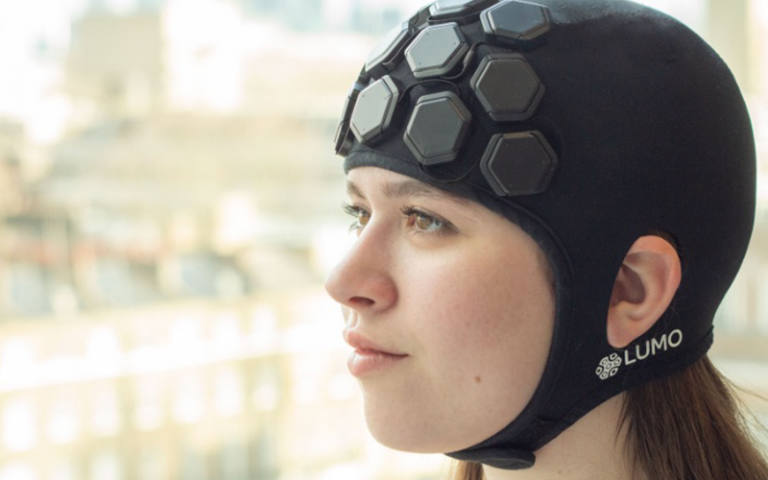Gowerlabs - advancing optical brain imaging for neuroscience applications in industry
UCL research has led to the first commercially available wearable brain imaging devices. Gowerlabs’ LUMO system allows brain activity to be measured under many circumstances.

28 April 2022
Technologies commonly used to measure brain activity such as functional MRI scanning use large immobile pieces of equipment and require the patient to remain still. They are unsuitable for use at the hospital bedside, at home, or in an ambulance and cannot be used to study the brain while the person is moving or interacting, making them unsuitable for use in young children.
Diffuse Optical Tomography (DOT), also known as functional near-infrared spectroscopy (fNIRS), measures brain activity using low levels of near-infrared light that travels through the brain cortex via the scalp and skull. DOT devices are a fraction of the cost and size of a conventional MRI scanner, making them ideal for portable and wearable applications.
Dr Nick Everdell and his multidisciplinary group at the UCL Biomedical Optics Research Laboratory (BORL) made significant improvements to the technology. After originally developing a benchtop device, the team went on to develop a novel encoding system that meant the optical sources and detectors could be placed wherever was convenient on the head, making it flexible and mobile.
Application of the DOT technology
When put into clinical practice, the system was the first to demonstrate an association between seizures in newborn babies and large, localised changes in haemoglobin concentration within the cortex of the infant brain. The system has paved the way towards a new understanding of neuroplasticity mechanisms.
Through UCL-led innovations and commercialisation via a UCL spin-out company, Gowerlabs, the DOT system has been adapted and developed to provide high-quality, real-time images of human brain function in a truly wearable package.
Gowerlabs built on the early work to develop the world’s first commercial, high-density, fibreless DOT system, LUMO, which provides significantly higher resolution imaging than any other commercially available DOT device. The system’s novel design enables high-quality images of the brain to be obtained in almost any environment.
It is now being used worldwide, by large corporations such Facebook and Apple, as well as many research institutions and clinics. There are systems in use in Africa, Australia, China, Europe, the UK, and the US. The products have generated significant revenues and are providing new ways to explore brain activity in real time.
Gowerlabs’ brain imaging systems have enabled modern machine learning techniques to accelerate brain computer interface development (BCI) for many applications, including in real time. For example, the LUMO system has been applied by Facebook Reality Labs to convert neural activity to text.
Lina Bunketorp Käll, Associate Professor and Senior Physiotherapist at the Centre for Advanced Reconstruction of Extremities (C.A.R.E.), Sahlgrenska University Hospital/Mölndal, Sweden, said: "The NTS benchtop imaging system has paved the road towards a new understanding of neuroplasticity mechanisms following reconstructive surgery."
Research synopsis
Advancing optical brain imaging for neuroscience applications in industry, academia and healthcare via a spin-out company - Gowerlabs
Research and innovation at UCL’s Biomedical Optics Research Laboratory has led to the development of the first commercially available high density wearable brain imaging devices. The LUMO system, developed by Gowerlabs, allows brain activity to be measured under almost any circumstances and is opening up new avenues for studying brain activity in areas ranging from brain computer interfacing (BCI) to medical devices.
Project team: Dr Nick Everdell, Prof Jeremy Hebden, Dr Robert Cooper, Dr Samuel Powell
Links
- Dr Nick Everdell's academic profile
- Professor Jeremy Hebden's academic profile
- Dr Robert Cooper's academic profile
- UCL Department of Medical Physics and Biomedical Engineering
- UCL Faculty of Engineering Sciences
- UCL Faculty of Engineering Sciences REF 2021
Image
- Image credit: Gower Labs
 Close
Close

